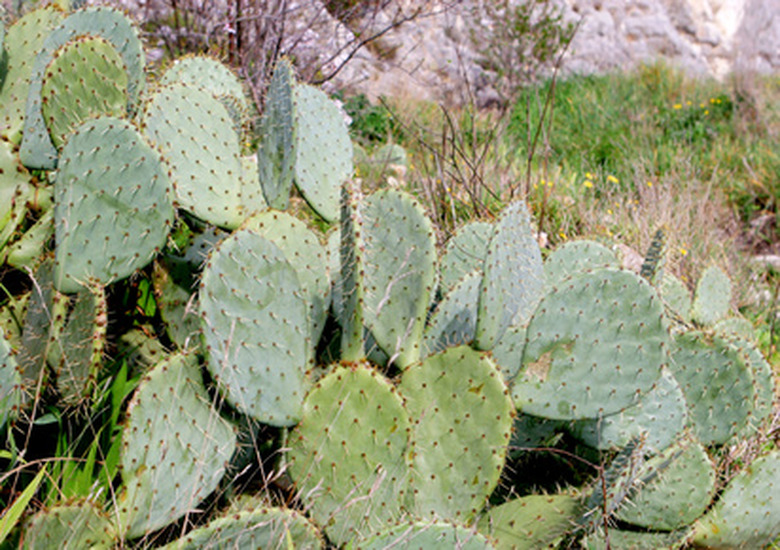Features Of Desert Plants
Deserts may be barren like the vast wasteland of the Sahara or crammed full of plants and animals like the Sonoran desert in Arizona. Two of the largest cities in Arizona, Phoenix and Tucson, are located in this desert. Desert plants not only survive but thrive in this area which receives an annual rainfall of only 7 inches.
Low Water Requirements
Desert plant survival depends on being able to exist on very little rainfall. The Sonoran desert rain occurs November through February and July through September. Plants cope with little to no rain during the dry months by going dormant or using stored moisture within the plant itself. Many plants like penstemon, desert mallow and desert marigold only bloom in early spring after the rain.
- Deserts may be barren like the vast wasteland of the Sahara or crammed full of plants and animals like the Sonoran desert in Arizona.
- Many plants like penstemon, desert mallow and desert marigold only bloom in early spring after the rain.
Small or No Leaves
Moisture evaporates through leaves. Leaves are used for photosynthesis, turning sunlight into energy for the plant to grow. Desert trees like palo verde, iron wood and mesquite have tiny leaves to reduce water escaping while still allowing photosynthesis. Cacti don't have leaves at all. The pads of the cacti replace the leaves for converting sunlight.
Thorns
Many desert plants have needles or thorns. Since the plants store moisture inside themselves, they require some sort of protection against animals. Thorns are the protection. Some animals, like javelina, ignore the thorns on new cactus pads and eat them anyway. Cacti aren't the only plants in the desert that have thorns. Many trees do as well.
- Moisture evaporates through leaves.
- Desert trees like palo verde, iron wood and mesquite have tiny leaves to reduce water escaping while still allowing photosynthesis.
Ability to Quickly Absorb Water
When it does rain, desert plants must be able to absorb the water quickly before it runs off or evaporates. One of the largest cacti in the world, the saguaro, has a very shallow root system. The tap root is only about 3 feet long. The lateral roots go out as far as the saguaro is tall, in some cases up to 50 feet.
Saguaro and other cacti will swell or expand to retain additional moisture and then shrink as that moisture is used by the plant. Plants will cluster around streams and creeks to absorb any underground moisture that may be available even when the creek is dry.
References
- "The Desert Gardener's Calendar"; George Brookbank; 1999
